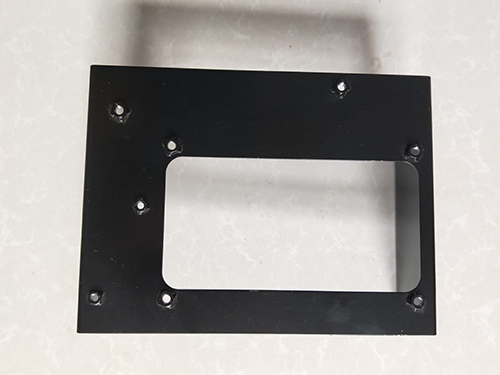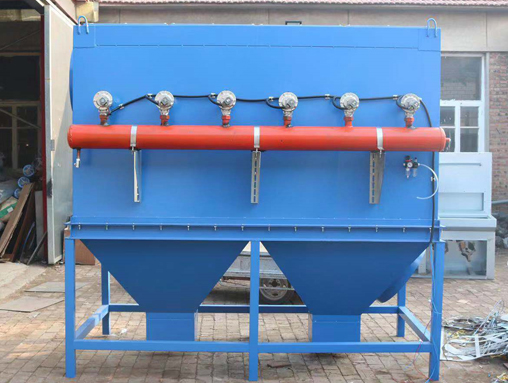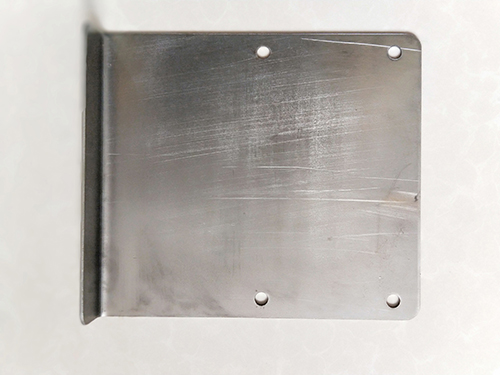Factors affecting springback of stamped parts and design methods
Metal stamping parts; Processing generally refers to the processing of cold pressed parts. It is necessary to design a set of molds according to the shape of the parts, and then use this mold to punch out the required parts. This is a simple process of cold stamping, which directly uses the mold to punch hardware materials.
Metal stamping processing is a production technology that utilizes the power of conventional or stamping equipment to directly deform the sheet metal in the mold, thereby obtaining product parts with shape, size, and performance. From this, it can be seen that sheet metal, molds, and equipment are the three elements of stamping processing.
Not only that, metal stamping processing is also a metal cold deformation processing method, which is one of the main methods of metal plastic processing and also belongs to material forming engineering technology. Compared with castings and forgings, metal stamping processing has the characteristics of thin, uniform, light, and strong.
The processing of metal stamping parts can be divided into two categories: separation process and forming process. The former is the process of separating the stamping part from the sheet metal along the contour line during the stamping process; The latter refers to the plastic deformation of the blank without being damaged, forming the required shape and dimensional accuracy of the workpiece.
Metal stamping parts processed through various techniques can be used in different industries. If there are other requirements for stamping parts in practical applications, they can be realized through subsequent processing techniques after stamping, thereby enhancing the value of the equipment.
The main factors affecting rebound
1. Material properties
In the elastic stage, the higher the yield and elastic modulus of the material, the more severe the work hardening phenomenon, and the greater the rebound of bending deformation; On the contrary, the stronger the ability to resist elastic deformation, the smaller the rebound value.
2. Relative bending radius
The smaller the relative bending radius, the smaller the rebound value; On the contrary, the larger the rebound value. This is why workpieces with a large curvature radius are difficult to bend and form.
3. Bending center angle
Bend the center angle. The larger the value, the longer the length of the deformation zone, the greater the cumulative rebound value, and the more severe the rebound phenomenon, but it has no effect on the rebound of the curvature radius.
4. Mold gap research and assembly situation
There is a gap of 1 material thickness between the relative working parts of the mold, which accommodates the product. After the mold processing is completed, the local parts need to be matched to achieve material flow. For bending molds, the larger the gap between their working parts, the more severe the rebound; If the allowable thickness deviation of the sheet metal is larger. The more unstable the rebound value, the harder it is to determine the reasonable clearance of the mold.
5. Part shape
The impact of different part shapes on springback varies greatly, for example, the springback of U-shaped parts is smaller than that of V-shaped parts due to mutual restraint on both sides. When a complex shaped curved part is bent and formed in one go, the stress state of each part of the curved part is changed due to the mutual restraint of its various parts and the frictional effect between the curved part surface and the mold surface (generally increasing the tensile stress in the bending deformation zone), thus affecting the rebound amount. If we add another molding, it would be much better.
6. Forming method
The bending method of the parts severely restricts their rebound value. Usually, the rebound effect of corrected bending is better than that of free bending. To achieve the same effect on the same component, the correction force required for correcting bending is much greater than the bending force required for free bending. If the same force is applied to it in two ways, the stress-strain state in the final deformation zone is also different from the result of free bending.
The greater the correction force during bending correction, the smaller the rebound, because the correction bending force forces tangential tensile strain to occur on both the inner and outer sides of the deformation zone, causing the fibers on both sides to elongate and achieve their forming effect. After unloading, both the inner and outer sides of the deformation zone shorten due to elastic recovery, and the rebound direction of the inner side is opposite to that of the outer side, causing the outward rebound trend of the parts to be even more pronounced.
In the bending process of all elastic-plastic metal sheets, there is an uneven strain distribution along the thickness direction in the bending deformation zone, which leads to the generation of uneven stress. When a certain stamped part is formed, there are residual stresses in the volume of the sheet metal, which are balanced with the contact force of the mold before the part is demolded; After the demolding of the sheet metal, a new balance of forces will be sought, and local residual stresses will be released, resulting in a deviation between the final size of the formed part and the shape and size of the mold, that is, the phenomenon of springback.
To reduce the rebound caused by bending deformation, materials with lower yield stress should be selected as much as possible while meeting the requirements of product strength. The yield stress of steel plate is much higher than that of ordinary metal plate, and the rebound amount will also be large; The thickness of the sheet also has a significant impact on bending rebound, usually the thicker the sheet, the smaller the rebound; The influence of the bending radius of the working part on springback cannot be ignored, and the smaller the bending radius, the smaller the springback after forming and unloading. Therefore, under the allowable conditions of sheet formability, the bending radius value should be minimized as much as possible.
The precision and quality of stamped parts are directly related to the design of their blanks, and there are many methods for designing stamped parts blanks. Among them, the design scheme based on some empirical calculation formulas is mainly applied to simple and expandable stamped parts, such as rotating parts, bent parts, or stamped parts composed of these simple parts, due to its limited application scope.
Due to the fact that only stamping parts with relatively simple shapes can establish corresponding slip line fields, and the mathematical expression of slip lines can only be obtained from the feature solution under particularly simple boundary conditions, coupled with the complex mathematical operations of the slip line method, it is difficult to promote and apply this method in the actual production of stamping blanks.
Meanwhile, geometric mapping method is also one of the design methods for stamping blanks. Its theoretical basis is to achieve the mapping of workpieces to blanks based on certain assumptions without considering boundary conditions such as deformation force, stress-strain relationship, and boundary friction.
But the method widely used in the forming of stamping blanks nowadays is the simulation method. Under the assumed conditions, based on the similarity of mathematical descriptions of many physical problems, a model composed of other physical media is used to simulate the metal flow of sheet flanges through mathematical similarity theory. This design method requires the design of electrolyte devices and data measurement, so its accuracy is affected by human factors.
In addition, a velocity field analysis method has been introduced, which optimizes the design of stamping blanks based on the initial velocity field of boundary points during the deformation process of the workpiece. During the deformation process, the boundary points move from their initial positions towards the final forming direction. The motion of each node is nonlinear and the direction is constantly changing. Obviously, if the final positions of each node are located on the target contour, then the design is ideal.







